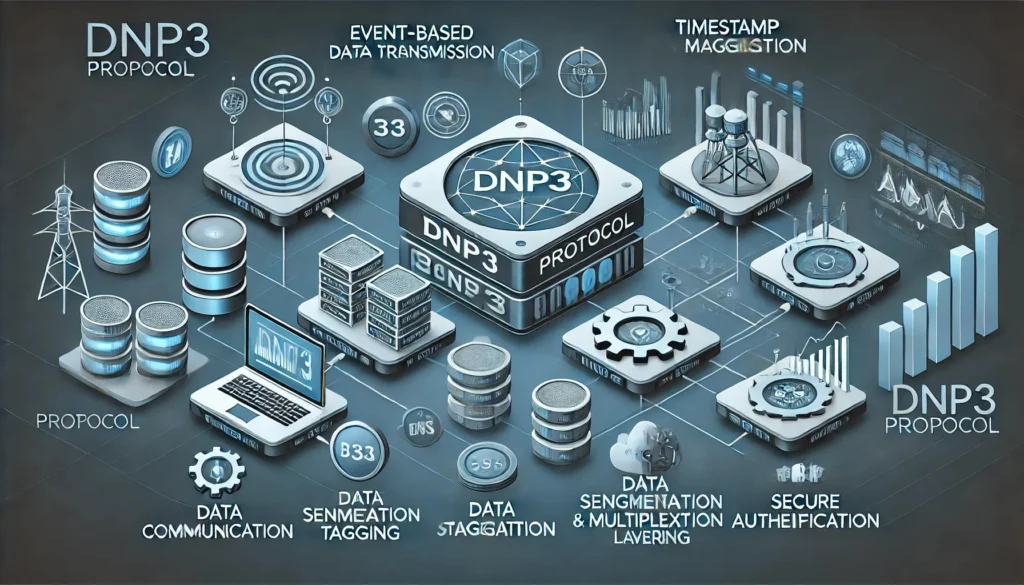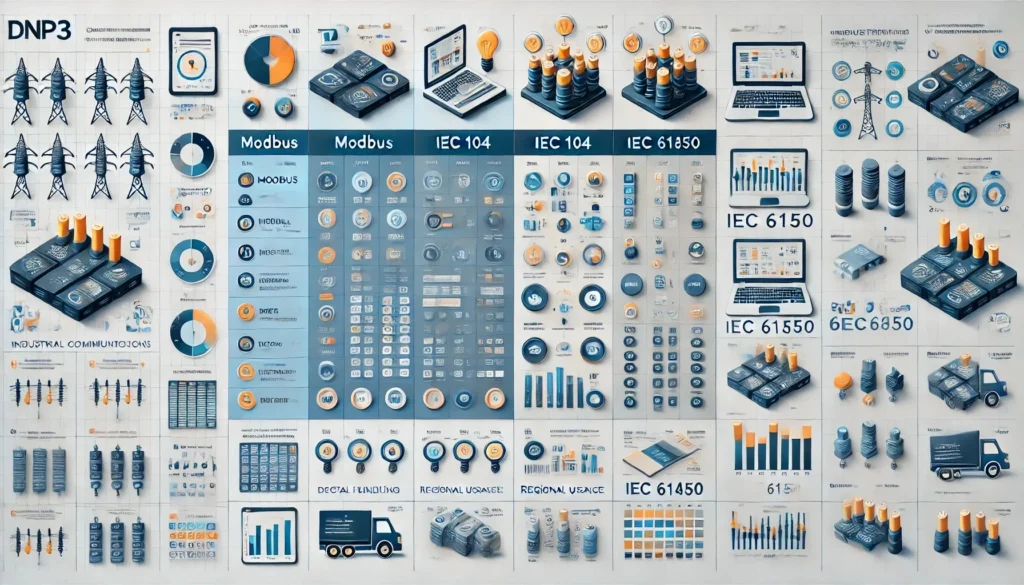[OT Sec] Mastering DNP3: The Core of Industrial Automation Communications

Table of Contents
In today’s industrial environment, highly reliable communication between devices is essential.
Especially in critical infrastructure sectors like electricity, gas, and water, real-time data acquisition and control are vital.
One of the key industrial communication protocols that supports these needs is DNP3 (Distributed Network Protocol version 3).
1. What is DNP3?

DNP3 was developed in the early 1990s, primarily for the U.S. electric power industry.
It was designed to ensure stable communication among automation control systems and has since been widely adopted across various industrial sectors.
It is optimized for transmitting data between Remote Terminal Units (RTUs), Programmable Logic Controllers (PLCs), SCADA systems, and control centers,
particularly excelling in long-distance communication and reliability-critical environments.
2. Key Features of DNP3

DNP3 offers more than simple data transmission — it incorporates several functions that improve communication efficiency and reliability:
✔ Event-Based Data Transmission
- Only changed data is selectively transmitted, reducing unnecessary communication traffic.
✔ Timestamping
- Data is recorded with the exact time of occurrence, enabling precise sequencing and root cause analysis.
✔ Multiplexing and Segmentation
- Large datasets are safely divided and transmitted, with various data types processed in parallel.
✔ Security Extensions
- Although basic DNP3 lacks strong security, enhancements like DNP3-SA (Secure Authentication) provide authentication and tampering protection features.
3. Communication Structure and Layer Composition

DNP3 operates on the lower three layers of the OSI model:
Data Link, Transport, and Application layers.
- Data Link Layer: Defines frames and performs error checking.
- Transport Layer: Breaks large data into segments and reassembles them in order.
- Application Layer: Handles actual control commands and sensor data transfer.
The typical setup involves a Master (Control Center) and multiple Slaves (Field Devices),
allowing one master to communicate with numerous slaves simultaneously.
4. Real-World Applications

DNP3 has proven highly effective across various industries:
⚡ Substation Automation: Real-time monitoring of protective relays and switchgear status.
💧 Water Level Monitoring: Automatic monitoring in dams and wastewater treatment plants.
🔧 Gas/Water Metering: Remote control of flow rates and pressure status.
5. Comparison with Other Industrial Protocols

DNP3 is often compared with Modbus, IEC 104, and IEC 61850. Here’s a simple breakdown:
| Protocol | Key Features | Comparison with DNP3 |
|---|---|---|
| Modbus | Simple, TCP-based | DNP3 is more efficient with event-driven communication. |
| IEC 104 | Focused on European power grids | DNP3 dominates the North American market. |
| IEC 61850 | Complex but flexible | DNP3 is simpler to implement and more cost-effective. |
6. Cautions When Using DNP3

Like any protocol, DNP3 has limitations that users must consider:
🔐 Lack of Native Security: Enhancements like DNP3-SA are necessary for stronger protection.
⏱ Real-Time Control Limitations: May not be ideal for ultra-fast control environments.
📶 Dependency on Network Quality: Performance can degrade in low-bandwidth environments.
7. Conclusion: Why DNP3?

DNP3 has long been a trusted communication protocol in industrial automation.
Thanks to its high reliability, efficient data handling, and strong scalability, it remains actively used — particularly in the power industry.
With evolving demands like smart grids, advanced automation, and integrated SCADA security, DNP3 continues to play a critical role.
By incorporating security enhancements, organizations can build safer, more flexible control systems for the future.
![[Physical Sec] Physical Security Risk Management Master Guide: Systematic Approach for PSP Professionals](https://ota2z.com/wp-content/uploads/2025/07/ChatGPT-Image-2025년-7월-27일-오후-10_36_26-768x768.webp)


![[OT Sec] The Importance of OT Security and Its Industrial Applications](https://ota2z.com/wp-content/uploads/2025/02/DALL·E_2025-02-03_10.21.22_-_A_modern_logistics_center_with_automated_convey-768x439.webp)

![[Physical Sec] PSP Certification Mastery: Complete Practice Guide for Physical Security Professionals](https://ota2z.com/wp-content/uploads/2025/09/ChatGPT-Image-2025년-7월-27일-오후-10_25_00-768x768.webp)